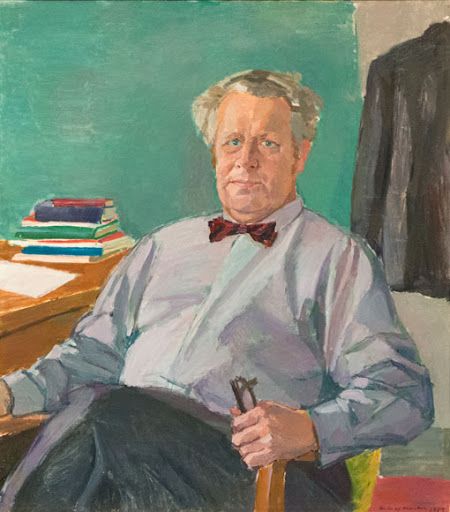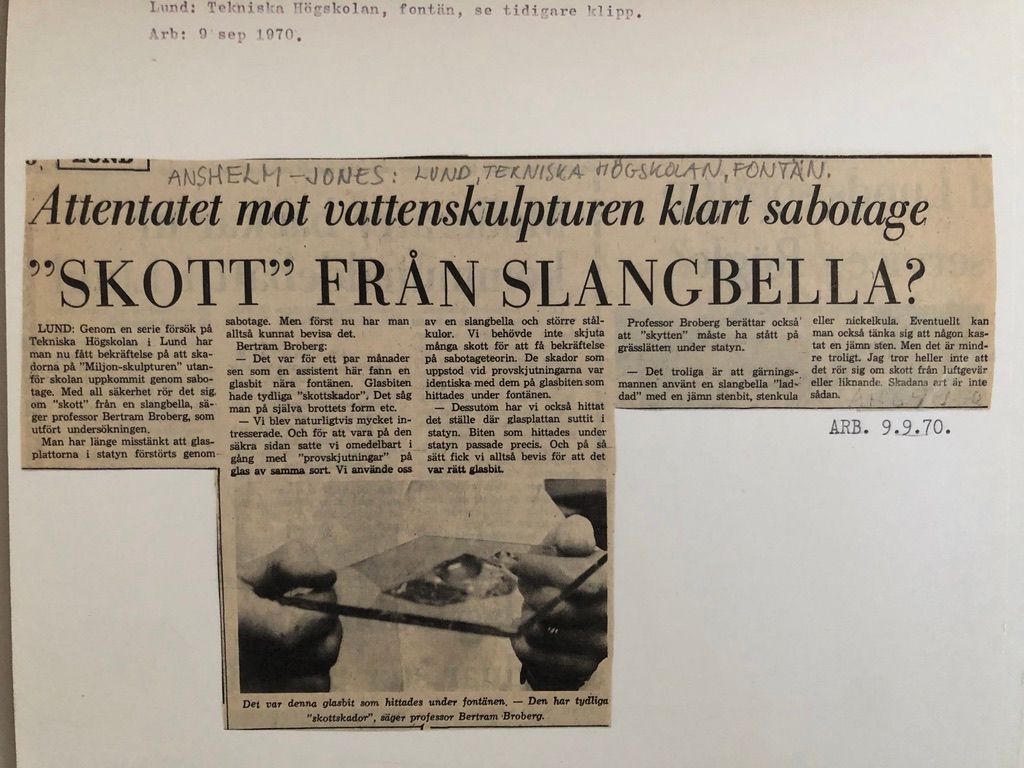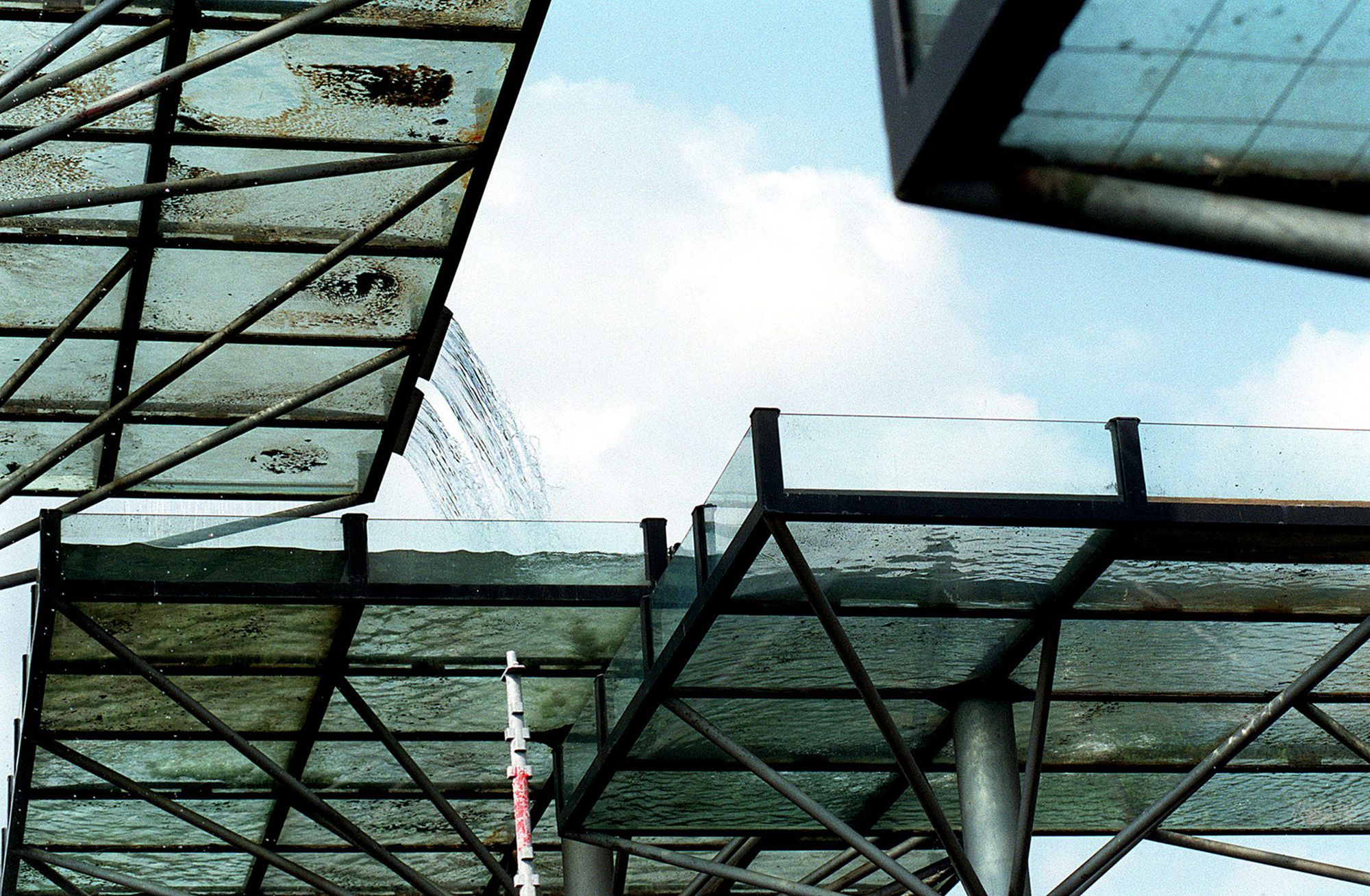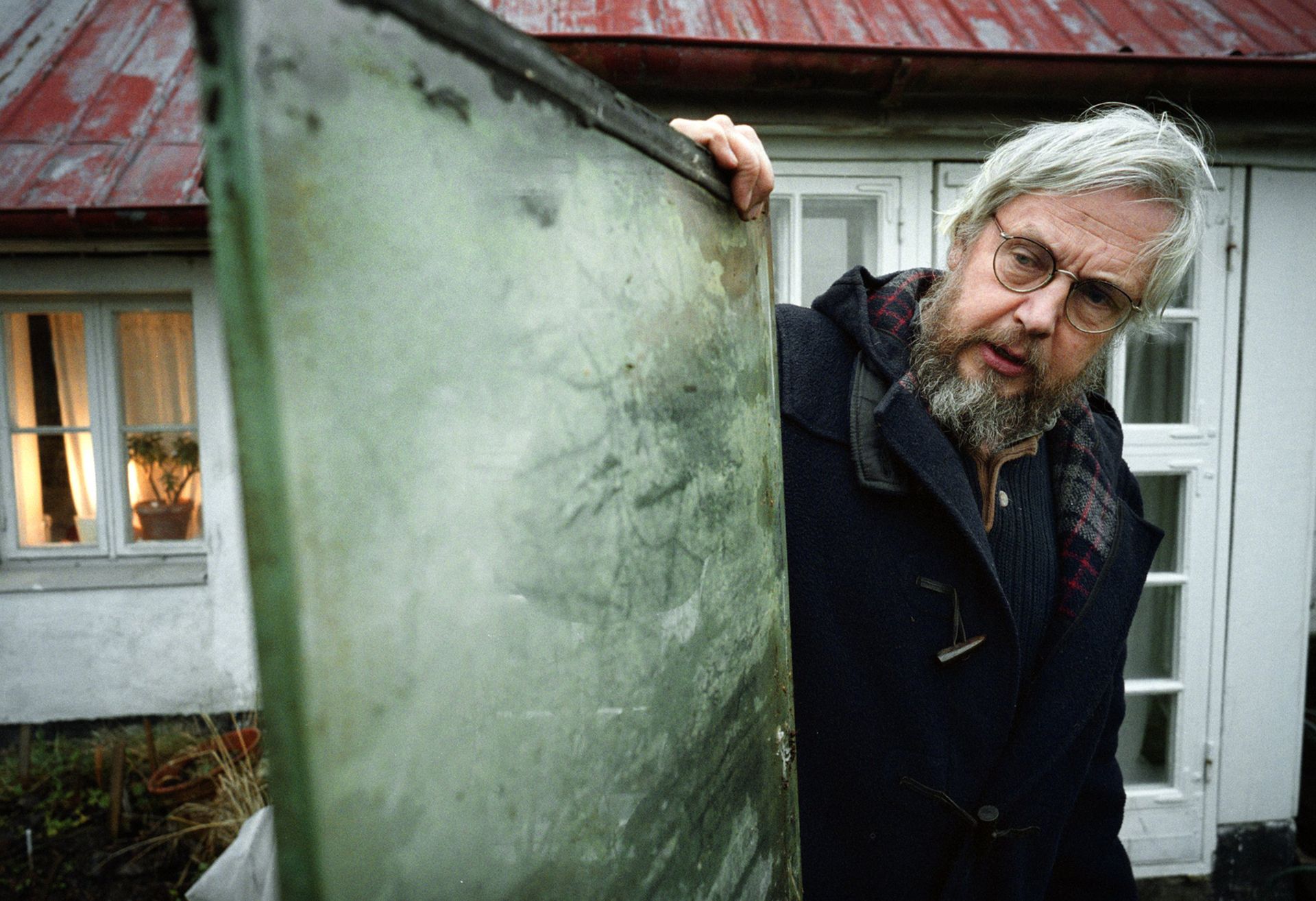One persistent part of the narrative around LTH-fontänen is that its 'glaslådor' (glass boxes) were subject to several attempts of "sabotage" by sling shot. Åke Holmberg, consulting engineer for the project, repeatedly cited this as the reason for the structure's failure rather than any miscalculation in design.


According to civil engineer Professor Sven Thelandersson, Klas Anshelm and Arne Jones insisted on using thick glass sheets imported from Belgium for the fountain. He wasn't sure why, but I suggested it could have been because it had a particular colour they liked, a hue that affected the way the sky looked beyond it. That's something I would think about if I were them.
Lars Henrik, Mick and I were meeting with Sven in V-Huset, V for Väg och vatten (road and water). We all agreed that cleaning the glass sheets would have been an ongoing headache for LTH. Given the muddy pond water we had just been staring at, it wasn't hard to imagine unwanted blots of algal growth accruing in corners and streaking the panes.

Skissernas Museum in Lund has a small fragment of glass from the fountain in its collection. Archivist Ann Landgren produced it from storage, wearing the soft white gloves required for handling museum objects. It was neatly labeled on one edge with 'ADK 24277'. In a recent email, architect Per Qvarnström wrote "Jag har en liten bit av originalglaset på mitt kontor och den är lite grön i tonen. Råglas?" Raw glass, a little green in tone. What kind of glass was it, exactly?

Pilkington glass, also called float glass, is made in a process where molten glass flows on a bath of tin and is " flattened by its own weight, creating a very flat sheet with a uniform thickness, perfectly smooth on both sides." Invented by Alistair Pilkington in the 1950s, it was in widespread production from the early 1960s and transformed the post-war construction industry. The LTH Fountain's glass panels were at least 20mm thick. The fragment I saw at the museum had smooth broken edges, how I imagine a small piece of glacier might look. It's definitely not laminated glass (the kind that car windscreens and bus shelters have), and its not tempered glass (which breaks into thousands of small "pebbles" on impact) so perhaps what Per is referring to is annealed glass.
Annealing, sometimes called 'Standard Glass', is the first stage in strengthening float glass when it is the cooled slowly to room temperature to "relieve internal stressors". Tempered or toughened glass uses air blasted onto reheated annealed glass, producing different rates of cooling between the surface and interior. Its four times stronger than annealed glass, considerably more expensive, and cannot be drilled or cut without shattering.
When annealed glass breaks it fractures into long sharp shards. Not what you'd want for an overhead structure where glass panels also have some weight-bearing capacity. So, I think the fountain's glass may be what's called heat-strengthened glass – the point between annealing and tempering. Apparently this process is used when additional strength is required to resist wind pressure. Importantly, when fractured this type of glass also tends to stay anchored at the breakage point, rather than raining an explosion of those small glass pebbles mentioned above.
Soon I am going to write to a man named Lennart Grip, former lecturer in Architecture at LTH and Lund resident. A news clipping from 2002 shows a photograph of Lennart holding one of fourteen glass panels he saved when LTH-fontänen was partially dismantled in the late 1990s. The caption reports that he has installed them in his garden in Lund. I'm curious to see the physical qualities of these large pieces of glass, and especially interested in how Lennart has arranged them.

Main image: Lennart Grip with glass from The LTH Fountain, 2002. Source: Bild i Syd.

